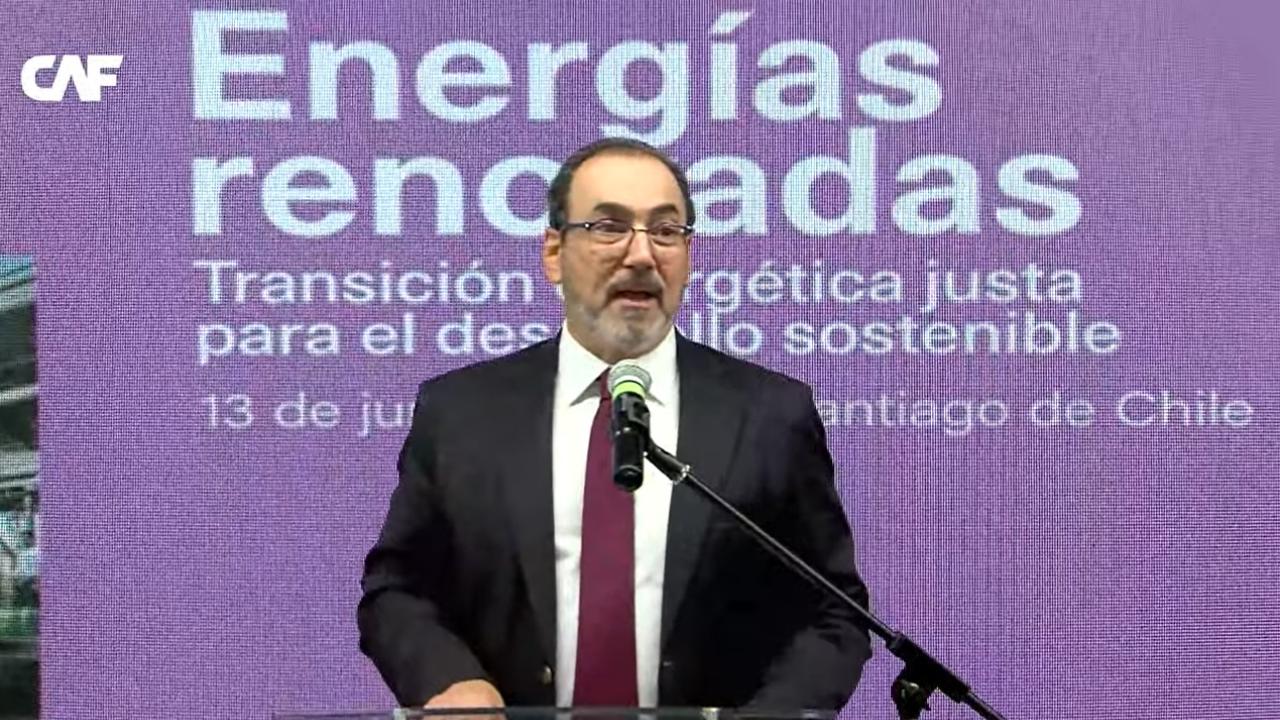
The multilateral bank presented a study that analyzes the options to decarbonize the region, based on a greater participation of non-conventional renewable sources and the development of low-emission fuels. In addition, it highlights the role of gas during the transition stage.
Renewable energies are the future of Latin America. But gas will be present for a long time.
The above is the summary of the latest Economy and Development Report, published by CAF (the multilateral bank), titled Renewed energies: Fair energy transition for sustainable development.
On it, the institution addresses the simultaneous challenges of growing per capita income each year in a considerable and sustainable fashion, aiming at reducing the levels of CO2 and greenhouse gas emissions, while diminishing economic inequality in the region over the coming years.
The report, called RED in Spanish, develops an exhaustive analysis of the current energy situation in the region, to then focus on the energy supply and demand agendas, with emphasis on three sectors: transportation, industry and the residential sector. It closes with an analysis of the impacts that the transition will have on the macroeconomy as a whole, particularly on public finances, the external sector and the labor market.
The regional launch of RED took place this week in the Chilean capital, with the participation of the Minister of the Environment, Maisa Rojas, the executive president of CAF, Sergio Díaz-Granados and experts in energy transition.
In this report, CAF points to powershoring --decentralization of production to countries that offer clean, safe, cheap and abundant energy and are close to large consumption centers, in addition to other virtues-- as a great alternative to attract industrial investments.
Latin America and the Caribbean (LAC) meets many of the conditions of the powershoring economy. After all, the region is geographically close to North America and Europe and several countries already have clean or mostly clean energy matrices, while others are walking the same path.
JUST TRANSITION
Comparatively, Latin America and the Caribbean contributes little in terms of emissions (11% of the global total), but is particularly vulnerable to the negative effects of climate change, which in turn demands climate adaptation and resilience efforts.
“Therefore, energy transition must be fair, promote vigorous and inclusive economic growth, and contribute to closing per capita income gaps with respect to the developed world and reducing inequality and poverty. This implies that, although all countries in the region must join the efforts to reduce energy emissions, the speed and strategies to do so will be specific to the reality of each country,” CAF highlights in the 60-page document.
“We are a region of solutions, with the capacity to contribute to the global energy transition process by taking advantage of the opportunities that arise for countries with reserves of critical minerals –such as lithium, copper or nickel–, with gas reserves whose use during the transition would reduce emissions without immediately abandoning fossil fuels and for countries with renewable energy production potential in the relocation of energy-intensive activities, the so-called powershoring,” said Sergio Díaz-Granados, executive president of CAF.
THE SUPPORT OF THE CAF
“With this RED, the development bank of Latin America and the Caribbean reaffirms its commitment to accompany the region as it successfully faces the challenge of a transition with renewed energy,” added Díaz-Granados.
The supply-side actions for decarbonization proposed in the RED are the increase in electricity generation capacity driven by a greater participation of non-conventional renewable sources and the development of low-emission fuels such as biofuels or hydrogen low emissions.
Furthermore, the report maintains that gas, both natural and liquefied petroleum, can play a crucial role during the transition by replacing more polluting fossil fuels such as oil and coal. In a scenario of replacing 50% of current uses of oil and coal for gas, the region's emissions could decline by 7%, which represents almost 65% of the total commitments that the region set for 2030.
That same year, the International Energy Agency foresees a peak in oil demand, and only from that year on would its use decrease globally, it was revealed this week.
In the case of the industrial sector, the transition involves the electrification of some processes or uses that currently depend on fossil fuels as well as the promotion of the circular economy. In urban mobility, the use of sustainable public transport (massive and active) is important.
In urban logistics there is room for electrification, while, in the case of freight transportation, the promotion of efficiency and the use of alternative fuels are measures that can be effective in the short term.
“A just transition also requires closing the gaps in energy access and quality that still persist in the region,” the study maintains.
To face the challenges of the energy transition, the RED also proposes four transversal policies: green financing, carbon markets and carbon taxes, carbon capture and use technologies, and the circular economy.
As part of its strategy to be the green bank and sustainable and inclusive growth in the region, CAF has committed to dedicate at least 40% of its approvals to green projects, including those that facilitate the energy transition. Which implies that they will be able to help different countries that request it with financing for this transformation.
“Both the 2023 and 2024 CAF reports have been on the environment and with each study we make presentations from all countries, inviting governments, as well as the private sector and civil society to discuss these issues. CAF can also approach countries to offer its help,” details Lian Allub, CAF's principal economist.
The RED presents a regional context in which it is vital to coordinate national and regional efforts to navigate the path of the energy transition. In that sense, the supranational institution will begin a roadshow around the continent presenting the report.









